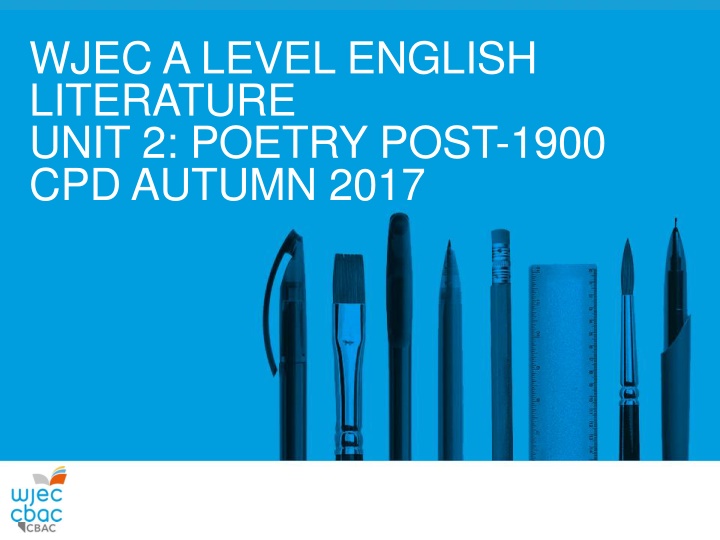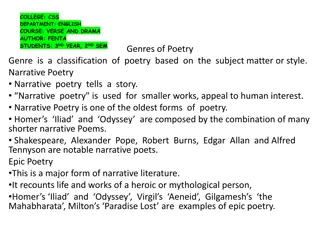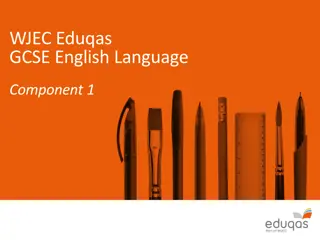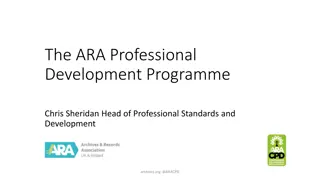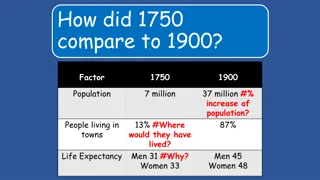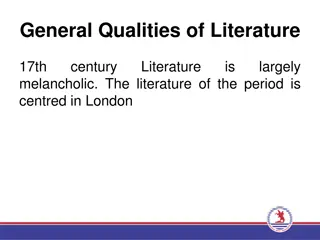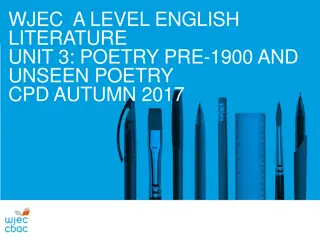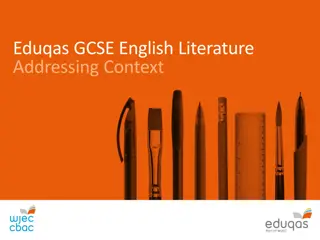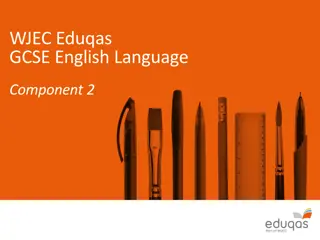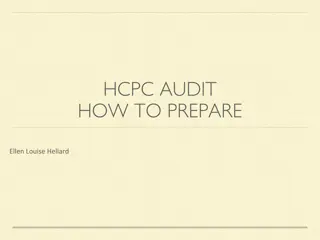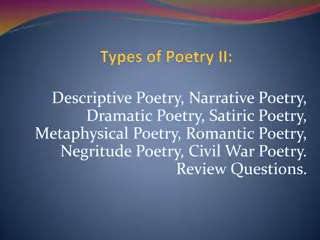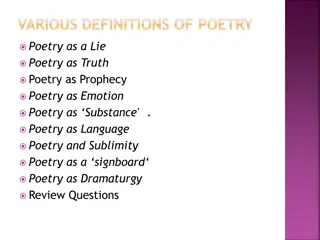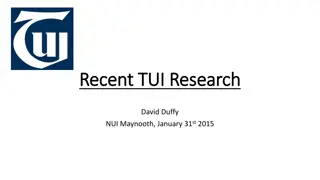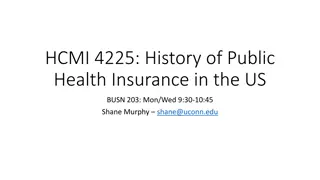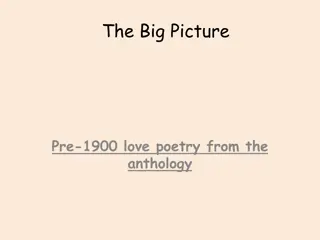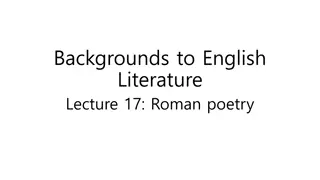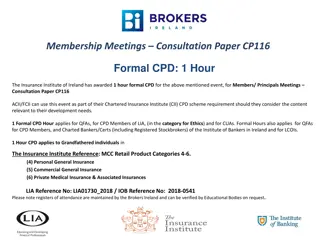A Guide to WJEC A-Level English Literature Unit 2 Poetry Post-1900 CPD
Explore the assessment objectives, principal examiner's reports, and tips for balancing the AOs in the Unit 2 poetry post-1900 CPD exam. Understand the importance of addressing all five AOs and maintaining a balanced approach in your essays. Dive into advice on structure, detailed analysis, and effective connections between texts to enhance your performance.
Download Presentation

Please find below an Image/Link to download the presentation.
The content on the website is provided AS IS for your information and personal use only. It may not be sold, licensed, or shared on other websites without obtaining consent from the author.If you encounter any issues during the download, it is possible that the publisher has removed the file from their server.
You are allowed to download the files provided on this website for personal or commercial use, subject to the condition that they are used lawfully. All files are the property of their respective owners.
The content on the website is provided AS IS for your information and personal use only. It may not be sold, licensed, or shared on other websites without obtaining consent from the author.
E N D
Presentation Transcript
WJEC A LEVEL ENGLISH LITERATURE UNIT 2: POETRY POST-1900 CPD AUTUMN 2017
Overview Open-book exam Section A: one question on one named poem Section B: one question comparing two poetry texts
Assessment Objectives Section A: Section B: AO1 (20 marks) AO2 (20 marks) AO1 (10 marks) AO2 (10 marks) AO3 (20 marks) AO4 (30 marks) AO5 (10 marks)
Principal Examiners Report: Key Points Greater focus on question/topic in Section A Evidence of planning Linking context to texts Best response included a wide range of contextual links, not just biographical. Some thoughtful response to structure
Principal Examiners Report: Key Points (X) X Learnt essays (AO1) X Feature-spotting (AO1) X Informal tone/careless expression (AO1) X Avoid more than four poems too many dilutes the response (AO1/AO2) X Leaving context until the end (AO3) X General comments for context (AO3) X Undeveloped connections (AO4) X Linking four poems simultaneously is unwise (AO4) X Tentative language has only limited reward (AO5)
Balancing the AOs The essay in Unit 2 Section B requires candidates to address all five AOs. AO1, AO2 and AO5 are worth 10 marks whereas AO3 is worth 20 and AO4 30. Therefore, balancing the AOs within the essay is crucial.
Balancing the AOs Avoid focusing on AO3 and AO4 to the detriment of AO2. It creates responses based on links and historical facts leading to non-literary essays AO2 should still underpin the essay Other AOs should develop from or be a stepping stone into analysis (AO2)
Structure Although valid, this structure can lead to limited discussion of connections between texts: Detailed close analysis (AO2) of Poem 1 with some AO3/ AO5 Detailed close analysis (AO2) of Poem 2 with some AO3/ AO5 Brief connections between the poems (AO4) Detailed close analysis (AO2) of Poem 3 with some AO3/ AO5 Detailed close analysis (AO2) of Poem 4 with some AO3/ AO5 Brief connections between the poems (AO4)
Structure More successful candidates tend to take the following approach: Introduction which touches on various AOs Detailed close analysis of Poem 1 and Poem 2 (AO2), exploring connections (AO4), making specific links to context (AO3) with discussion of different interpretations Detailed close analysis of Poem 3 and Poem 4 (AO2), exploring connections (AO4), making specific links to context (AO3) with discussion of different interpretations Conclusion
Successful candidates: Choose well-selected detail with supporting evidence (AO2) which they can link to specific contextual detail (AO3) Make connections (AO4) between the selected AO2 points. Stronger candidates make links between texts/quotations/ways in which meaning is created Consider different interpretations (AO5) through linking to specific points within the poems and not merely through general views of poets work
Activity Read the paragraphs on the essay (see booklet) responding to the following question: How far do you agree that Larkin and Duffy are alike in depicting relationships as rarely simple ? You must analyse in detail at least two poems from each of your set texts.
Activity and discussion Annotate/highlight the AOs Find examples of where the AOs are balanced well How does the candidate succeed in balancing them? Is there anything the candidate could improve?
Linking paragraphs While Duffy presents relationships in a complicated light at once, Larkin's portrayal Similarly, Duffy presents The vivid descriptions echo the detail Larkin demonstrates
Linking paragraphs These links are also developed: While Duffy presents relationships in a complicated light at once, Larkin's portrayal of the complications which arise from personal relationships is slightly more veiled Similarly, Duffy presents how feelings can often prove to be a barrier in developing sound personal relationships, perhaps even preventing a relationship from developing as in Larkin's case. In 'Havisham', however, it is the subsequent "relationship" which proves to be complicated The vivid descriptions echo the detail Larkin demonstrates in 'Wild Oats' as he lists numerical facts about his relationship with the girl in "specs" such as "in seven years", "four hundred letters".
Considering different interpretations These are specific and developed: These numerical dates not only reflect the detailed descriptions of 'Havisham' but also suggest that Larkin, through the persona, is as obsessed with his relationships as Miss Havisham. However, critics have often argued that while perhaps proving Larkin's personal involvement in 'Wild Oats', as the relationships in the poem are often cited to be true, the details do not necessarily suggest that he loved his partner. Some readers might say that the numerical detail only further emphasise Larkin's disinterest.
Embedding context Context comes from the analysis: Some critics have pointed out that this is very clear in his letters, which were published posthumously, where he discusses his often complex relationship with women. It is clear that love, and the rejection at the altar which is the context to this poem Larkin's personal involvement
Discussion and sharing good practice In what practical ways can we help learners work on balancing the AOs? Do you already have ways in which you help learners to structure their essays effectively? How do you keep AO2 central in the teaching of the poetry while also addressing the weight of AO3 and AO4?
Activity Read the question on Heaney and Sheers from the 2017 paper Read the poems In pairs, choose at least two points to make based on AO2 Link these points to the other AOs
Guidance from 2017 marking guidelines (AO3) Heaney: his experience living in the cottage at Glanmore and then in Dublin in the 1970s the influence of other poets and artists, especially Yeats, Lowell, Dante his response to political events, especially 'The Troubles' in Northern Ireland his responses to the deaths of friends and family his relationship to the Irish landscape and history. Sheers: his childhood growing up near Abergavenny on the Welsh border the landscape of the Skirrid and related country activities such as farming his interest in Welsh history and society travels in Zambia and the USA literary influences such as RS Thomas, Eliot, Heaney and Larkin.
Cwestiynau? | Any Questions? Cysylltwch n Swyddogion Pwnc arbenigol a th m cefnogaeth weinyddol eich pwnc os oes gennych unrhyw gwestiynau. Contact our specialist Subject Officers and administrative support team for your subject with any queries. gceenglish@wjec.co.uk @wjec_cbac @cbac_wjec cbac.co.uk wjec.co.uk
